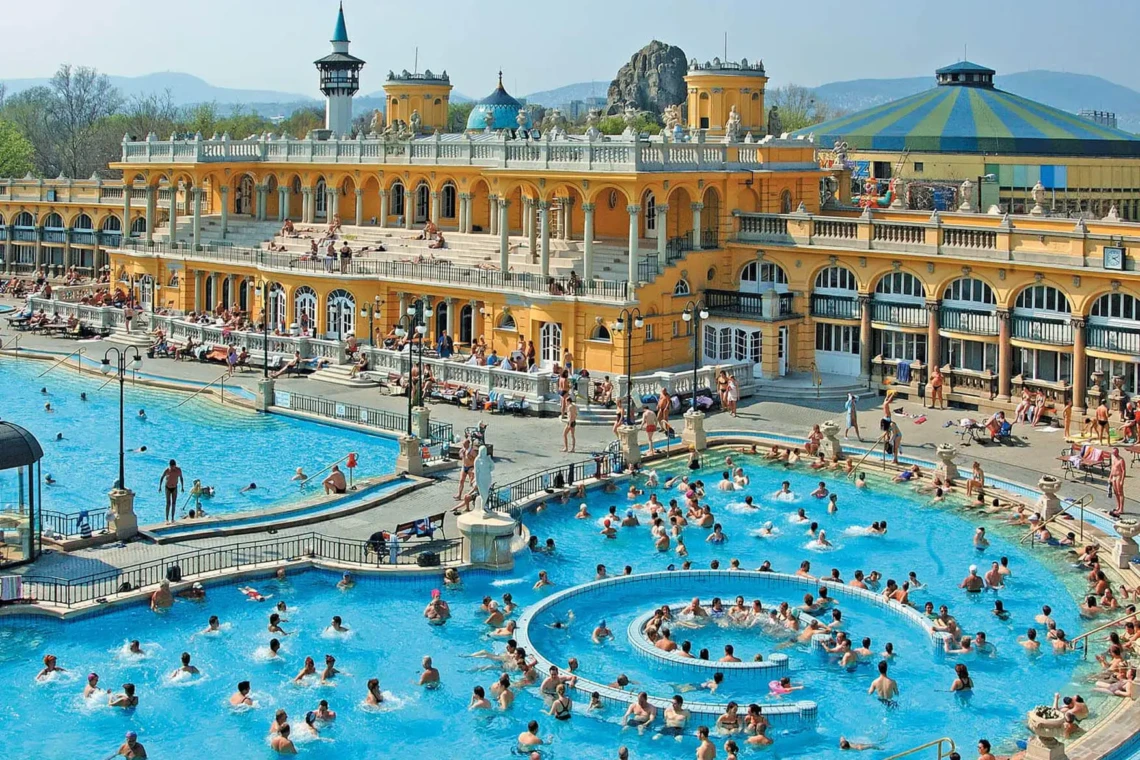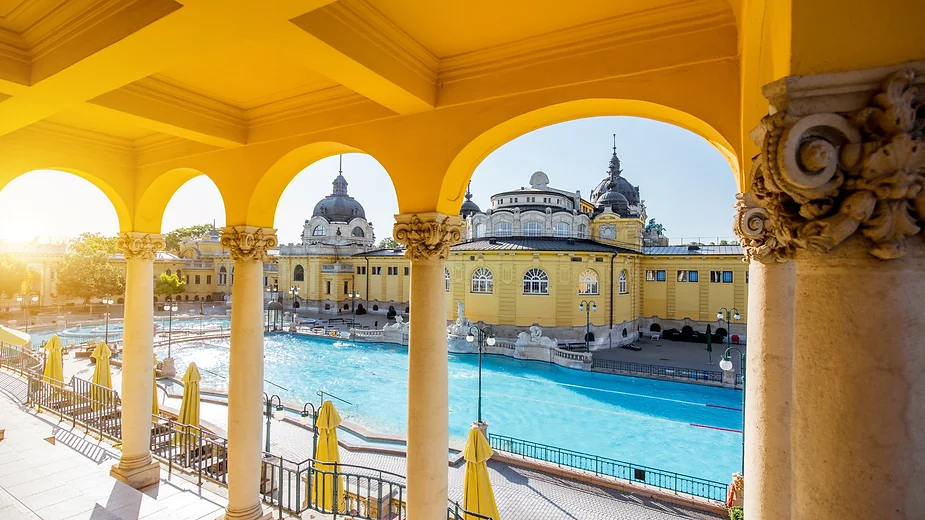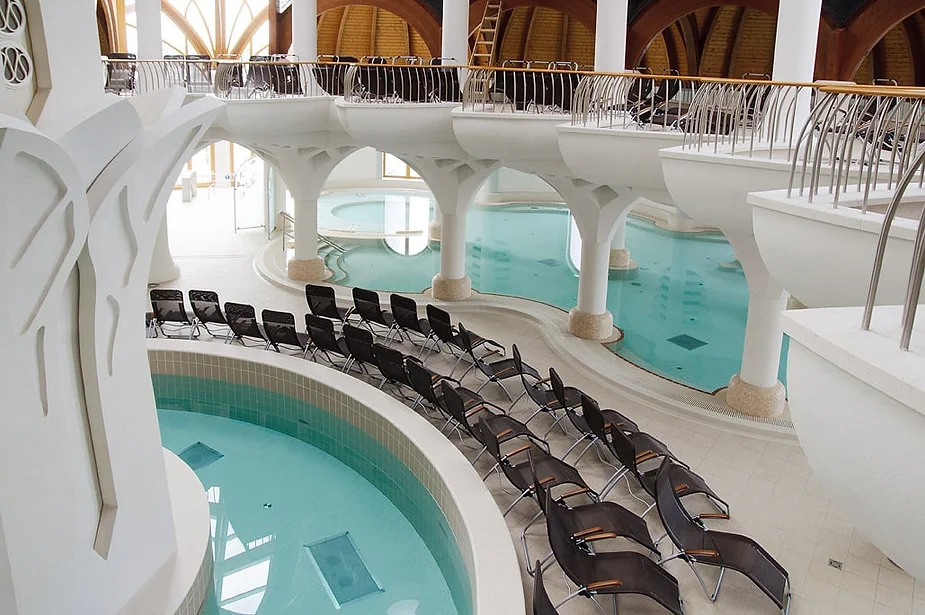Chain Bridge
- November 14, 2023
- Travel
The Széchenyi Chain Bridge is Budapest’s most famous landmark. It is named after the main facilitator of its construction, the great Hungarian... Read More

A unique feature of thermal baths is the Gellért Baths. There aren’t many baths that can match its upscale ambiance and illustrious history. One of the most significant examples of Hungarian Art Nouveau, the structure features Miksa Róth’s ornamental windows in the main hall and Zsolnay ceramic ornaments inside the bath. It makes sense that Gellért Bath was selected as the registered location for the International Society of Medical Hydrology. The thermal bath stands out from the competition even with its cutting-edge services. While its inhalator and salt chamber treat asthma and other lung conditions, its medicinal water is suitable for treating joint and spinal diseases, vertebrae disorders, and circulatory issues.

Being in a historical thermal bath constructed in 1913 is incredibly special. It was Budapest’s first medical spa and is also the giant medicinal bath in Europe. You will undoubtedly be amazed by the building’s neo-baroque design. Your daily pass allows you to access the steam rooms, saunas, and aqua fitness classes. Schedule a massage, unwind by the pools, and let the natural thermal waters relax your muscles and relieve shoulder tension. Visiting the bath as early as possible in the morning is advised to avoid the crowds because it opens at 6 am.

The Rudas Thermal Bath is arguably Budapest’s most famous medieval Turkish bathhouse. After being restored in 2012, the structure combines history and modern luxury. The massive dome-covered central pool with its octagonal shape is imposing. Also, remember to check out the rooftop pool! From here, you can enjoy a stunning view of Budapest’s bridges and the Danube. It would help if you went to the bathhouse during the workweek to have a nice, quiet, and relaxing time there. Since Saturday is the week’s busiest day, avoid going there. If you want to experience a relaxing sauna or a Turkish bath from the 16th century, you must visit this location.
One of Budapest’s historic thermal baths, Lukacs Bath, offers good value for the money, especially in 2023 when admission to the Lukacs Baths will be free with the purchase of a Budapest Card (open from Monday to Sunday). One of the locals’ favorite baths is Lukacs Bath. The numerous Gratitude Tablets or stone plaques on the walls of Lukacs Bath express gratitude for the healing properties of the geothermal waters. Other strengths and specialties include the Himalayan Salt Room for treating respiratory issues, the Weight Bath for stretching the back and treating spinal injuries, etc. comprehensive information on the Lukacs Bath Pools.

The thermal waters in the city of Miskolc, located in a natural cave, first gained popularity during the Ottoman occupation of Hungary. Three outdoor pools and the foundation of a bathing complex were built in the 1700s while the Görömböly Greek Orthodox abbey owned the area. By the 1830s, the structures had deteriorated, but starting in 1837, a series of restorations and renovations transformed the baths, and Tapolca now has official status as a spa town. The Cave Bath, which opened on May 14, 1959, offers a distinctive setting to enjoy temperature thermal waters of about 30°C (86°F).
Imre Makovecz is credited with creating the Hagymatikum building in Makó, regarded as a marvel of organic architecture. The water from the bath is also a powerful medicine that can treat muscle atrophy, degenerative spinal diseases, inflammation of the joints and nerves, pain from the nerves, and paralysis. There is also medicinal mud from the River Maros that has ideal granule composition and plasticity and is used, among other things, in mud baths to treat rheumatic diseases, lower back pain, and gynecological inflammation. It can also successfully heal the body after broken limbs. The spa offers visitors treatments, medical services, thermal pools, indoor and outdoor adventure pools, and relaxing saunas.

The thermal Lake of Hévz is a genuine gem and a rare natural phenomenon in Hungary and worldwide. It is the world’s largest thermal lake that is safe for swimming. The lake has a distinctive atmosphere because a lush, green forest surrounds it, and the air is perpetually sulfur-scented from the spring waters. The health benefits of the warm spring waters are immediately felt by all visitors, regardless of age. Purple, pink, and white water lilies float on the surface of the turquoise-colored lake and bloom from May to October.

source: thewalkingparrott
Latest Comments